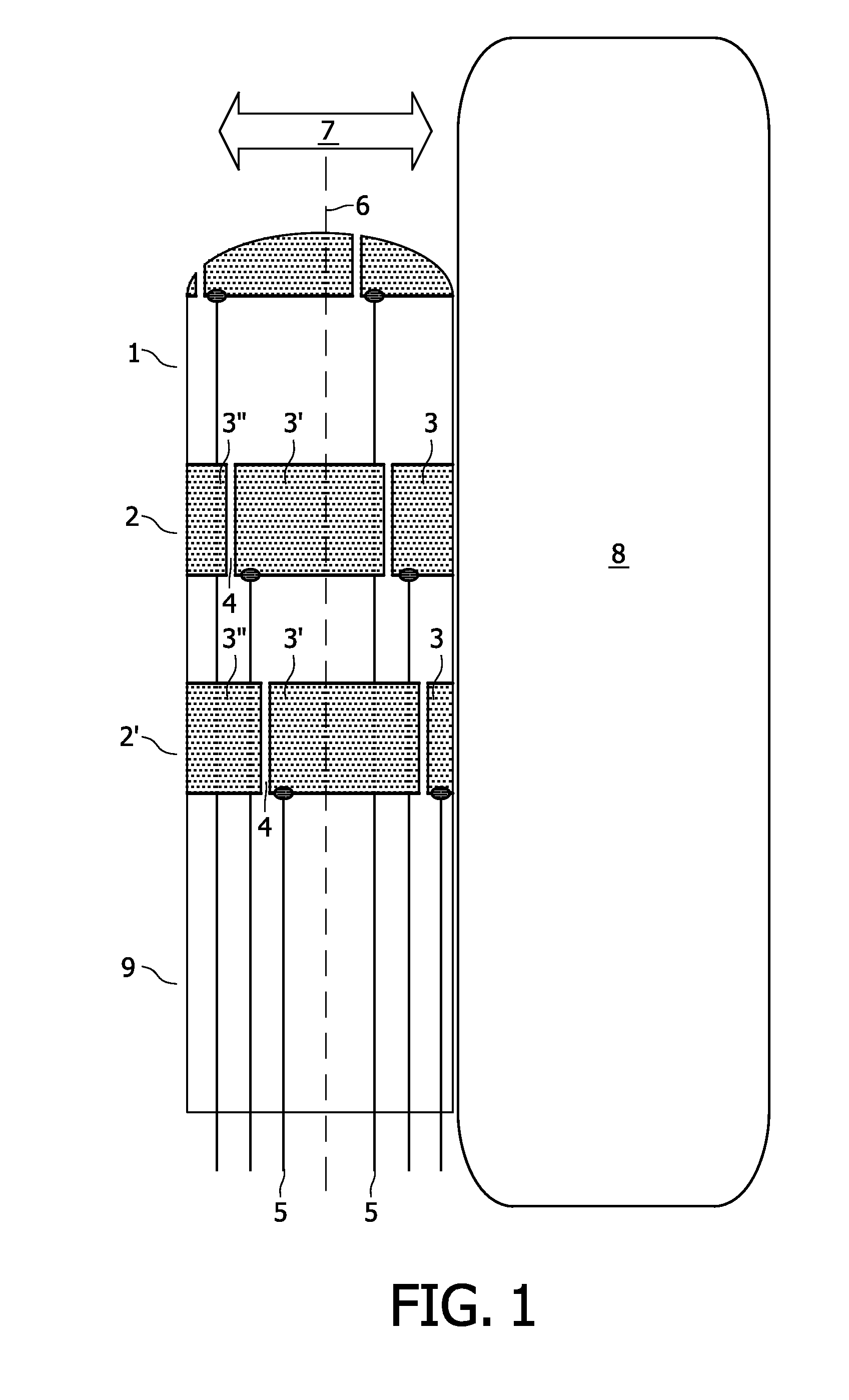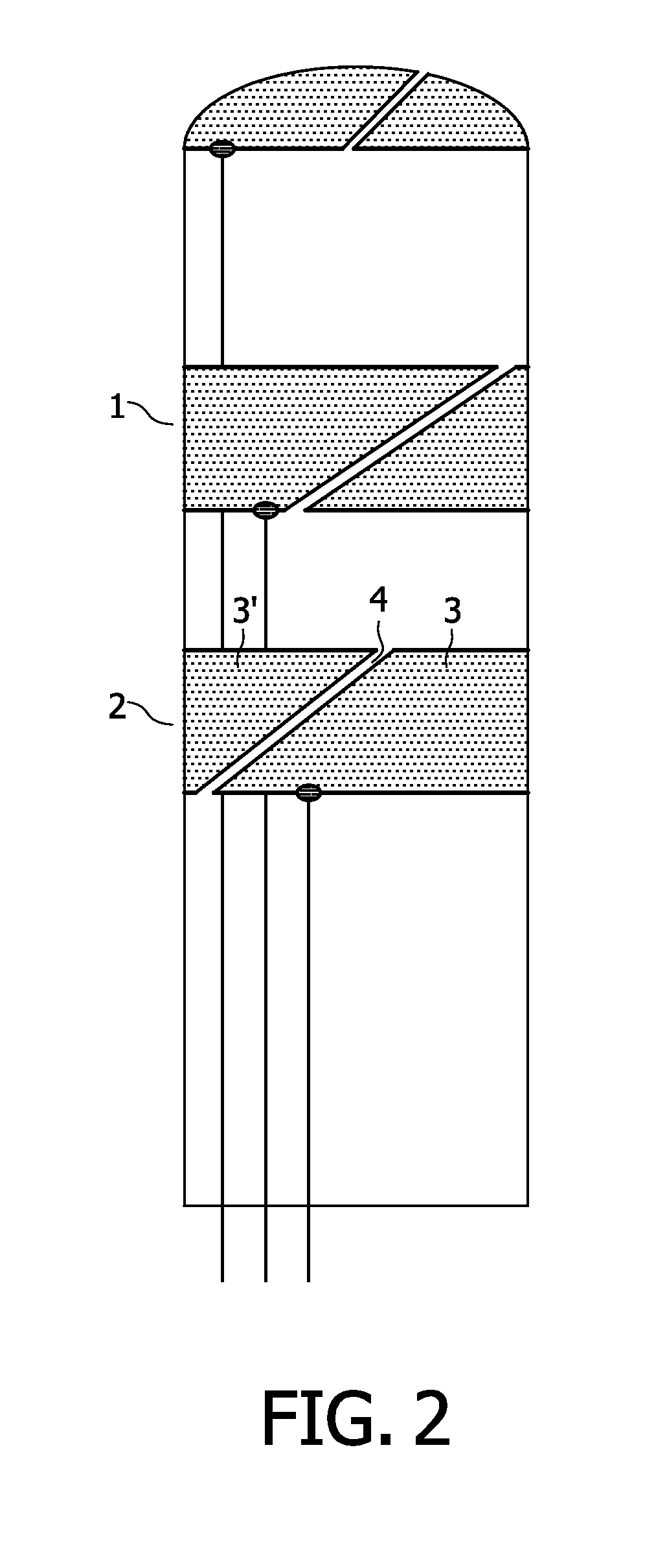Electrophysiology catheter
- Summary
- Abstract
- Description
- Claims
- Application Information
AI Technical Summary
Benefits of technology
Problems solved by technology
Method used
Image
Examples
Embodiment Construction
[0057]The basic hardware for use in various embodiments of the invention will be described in the following in relation to FIGS. 1 through 3.
[0058]FIG. 1 shows a distal end portion 1 of an EP catheter 9 according to various embodiments of the invention. A centre axis for the distal end portion is illustrated by punctured line 6. Distal end portions of catheters are normally bendable to facilitate steering of the catheter during advancement in a patient. Arrow 7 illustrates a bending direction of the distal end portion 1 being transverse to the centre axis 6.
[0059]Electrode segments 3 (3′, 3″) are arranged in bands 2 around the end portion to detect and thereby map electrophysiological signals in patient anatomy. It is customary to have many bands, such as around 20 bands, around such EP catheter. The electrode segments are separated by slits 4 to electrically isolate them from each other.
[0060]It is preferred that such slits 4 are narrow to avoid dead regions with no electrode cover...
PUM
 Login to view more
Login to view more Abstract
Description
Claims
Application Information
 Login to view more
Login to view more - R&D Engineer
- R&D Manager
- IP Professional
- Industry Leading Data Capabilities
- Powerful AI technology
- Patent DNA Extraction
Browse by: Latest US Patents, China's latest patents, Technical Efficacy Thesaurus, Application Domain, Technology Topic.
© 2024 PatSnap. All rights reserved.Legal|Privacy policy|Modern Slavery Act Transparency Statement|Sitemap



